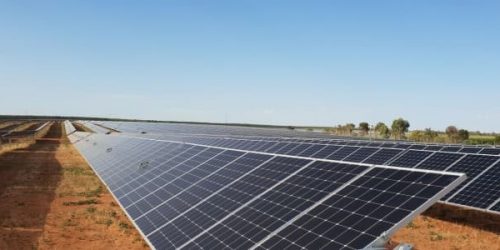Renewables are set to be the fastest-growing source of energy in the coming decades, giving fossil fuels such as coal and oil a run for their money in many parts of the world. Sure, the world will continue to need oil, coal, and natural gas in the future, because energy systems cannot and will not switch to 100-percent low-carbon energy sources any time soon.
Recent data and analyses suggest, however, that renewable energy sources such as solar and wind power and increased penetration of electric vehicles (EVs) are becoming increasingly competitive with the dominant energy sources of the 20th century—oil, coal, and natural gas.
Increased rates of electrification and industrialization in emerging markets will support the rise in consumption of energy of all kinds, but all analyses point to slowing growth in oil and gas consumption. On the other hand, renewables have been the fastest-growing energy source in recent years and are expected to continue to be such in the coming decades.
Last year, renewables accounted for 41 percent of the rise in energy demand, the largest of any energy source, BP Statistical Review of World Energy 2020 showed.
To compare, natural gas represented 36 percent of the increase in energy demand, and oil was only 21 percent of the rise in total global energy demand, according to estimates from Reuters columnist John Kemp.
According to BP, primary energy growth in 2019 was driven by renewables, followed by natural gas, which together contributed to over three-quarters of the net increase. Related: Big Tech Still Loves The Oil Business
“The share of both renewables and natural gas in primary energy increased to record highs. Meanwhile, coal consumption declined, with its share in the energy mix falling to its lowest level since 2003,” BP said in its statistical review published earlier this year.
Natural gas, coal, and oil will continue to be major sources of energy in the coming years, but renewables and EVs will encroach on their territory.
As per BP’s Energy Outlook 2020 published on Monday, renewables – led by solar and wind – will be the fastest-growing energy sources over the next three decades, with renewable energy use in the power sector growing quickly in all three scenarios that BP has examined—Rapid, Net Zero, and Business As Usual (BAU). The growth in renewables will be accelerated by declining costs and policies around the world to encourage a shift to lower-carbon energy sources, BP said.
The trend in renewables dominating power capacity additions has already started. According to estimates from research company BloombergNEF (BNEF), solar and wind power combined accounted for 67 percent of all new power capacity the world added last year, while the share of fossil fuels in new capacity declined to 25 percent. With a record 118 gigawatts (GW), photovoltaics (PV) accounted for 45 percent of new-build capacity and was the most popular technology deployed in a third of nations, BNEF said.
Including hydropower, renewables accounted for three-quarters of all commissioned capacity globally last year.
The use of coal in developed economies is sliding because older coal-fired plants cannot compete economically with new natural gas and renewable capacity, Ethan Zindler, head of Americas at BNEF, says.
Going forward, cost competitiveness will be key to how much oil, gas, and coal that renewables can displace.
Renewable power is increasingly cheaper than any new electricity capacity based on fossil fuels, the International Renewable Energy Agency (IRENA) said in June.
In fuel demand for road transportation, the higher the penetration of EVs in major automotive markets, the more oil (gasoline) demand could be displaced.
EV sales are set to benefit from the ‘green recovery’ plans of many governments, especially in Europe. China is also looking to boost EV use and has extended subsidies for EVs through the end of 2022, Ram Chandrasekaran, Principal Analyst – Transportation & Mobility at Wood Mackenzie, said last month.
WoodMac expects total global EV fleet to jump to 323 million over the next 20 years—that’s 35 times the current level, as this year’s recession “has left a dent in the electric vehicle (EV) sector but it’s a scratch on the paintwork, not a big repair job.”
The energy transition is here, but it will be a gradual shift toward sustainable energy sources when the power systems and grids are ready to accommodate such a shift. Meanwhile, fossil fuels will still be needed decades from now. Even if we are past peak oil demand – as BP estimates in two out of three scenarios in its report today – that doesn’t mean we stop using oil, it means the use of oil stops growing year over year.





